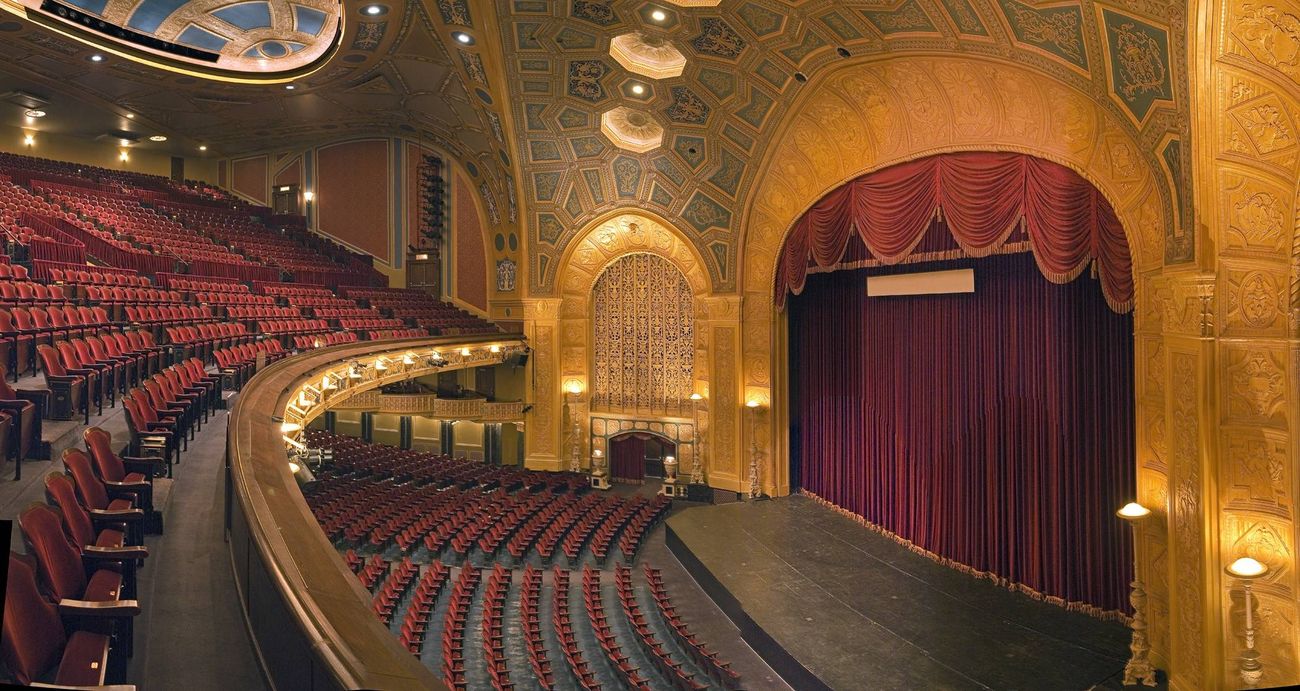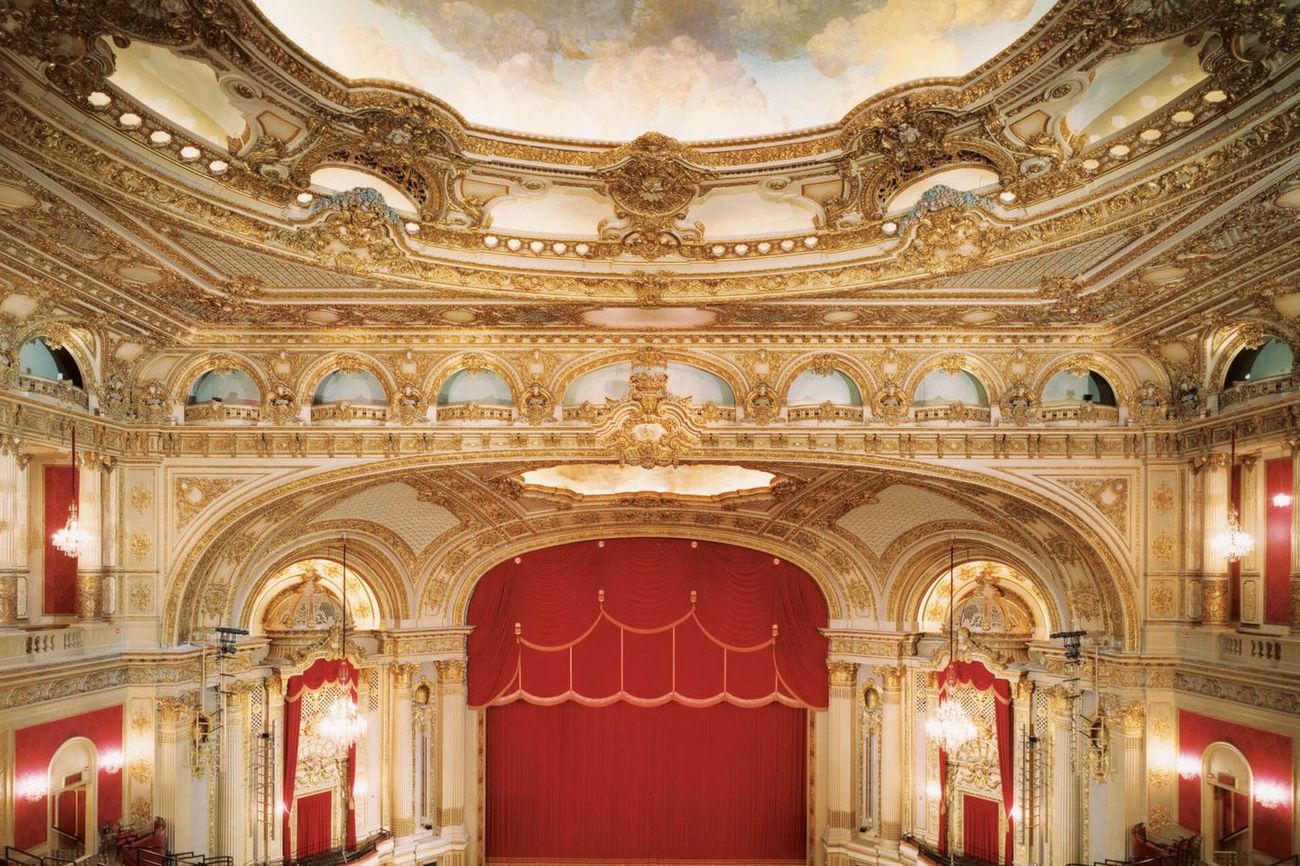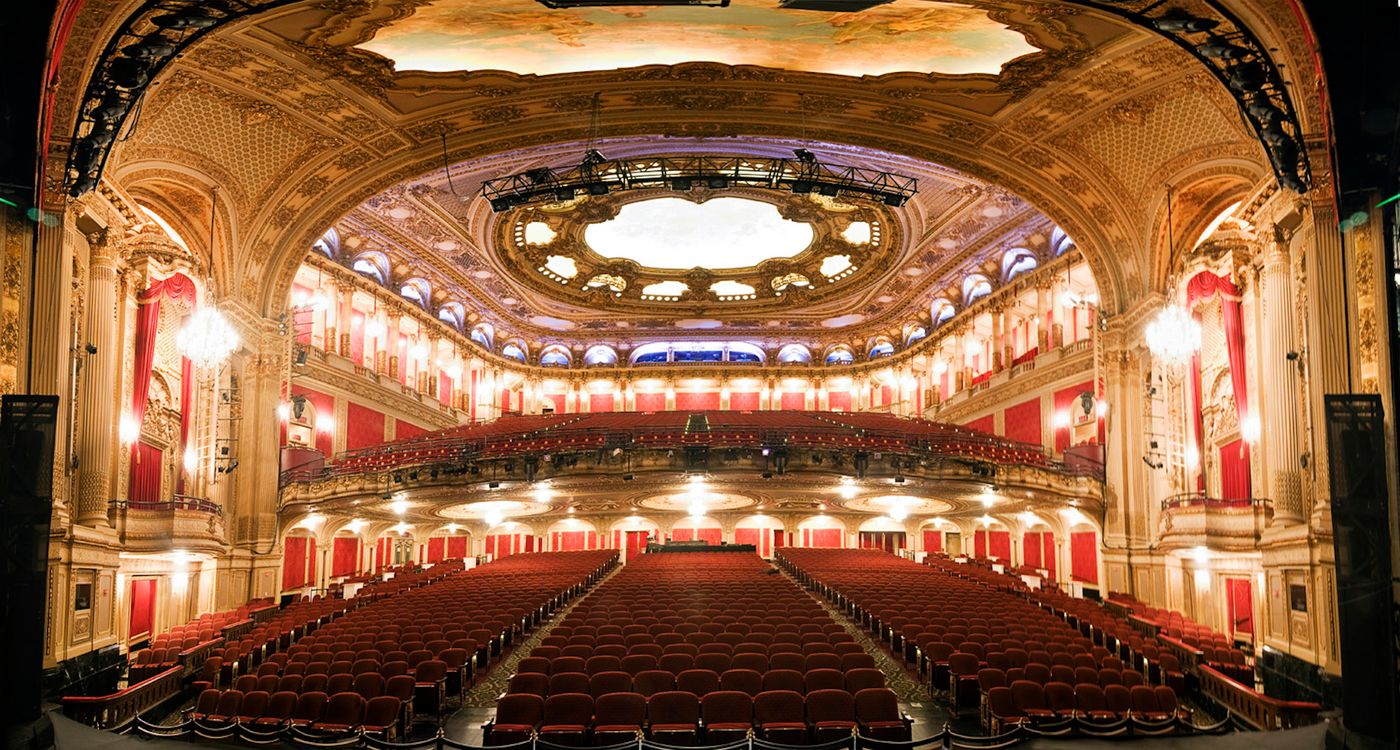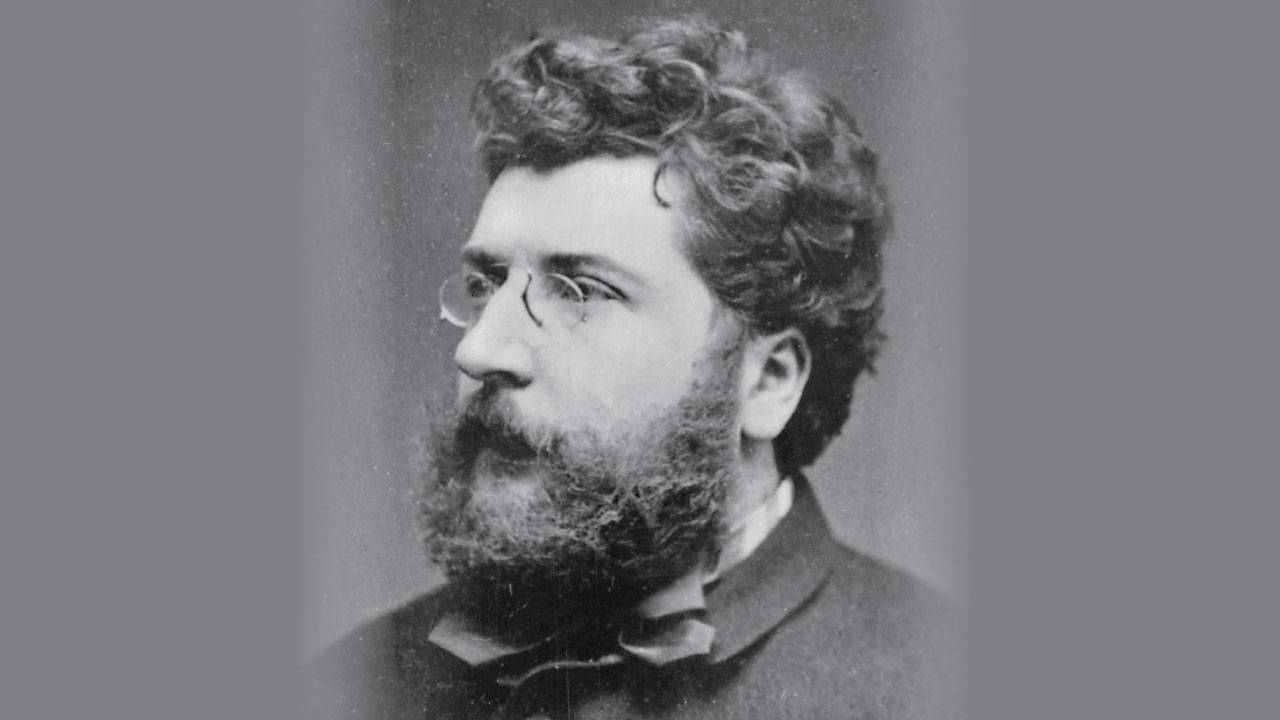Home>Events & Info>Opera>Who Designed The Sydney Opera House
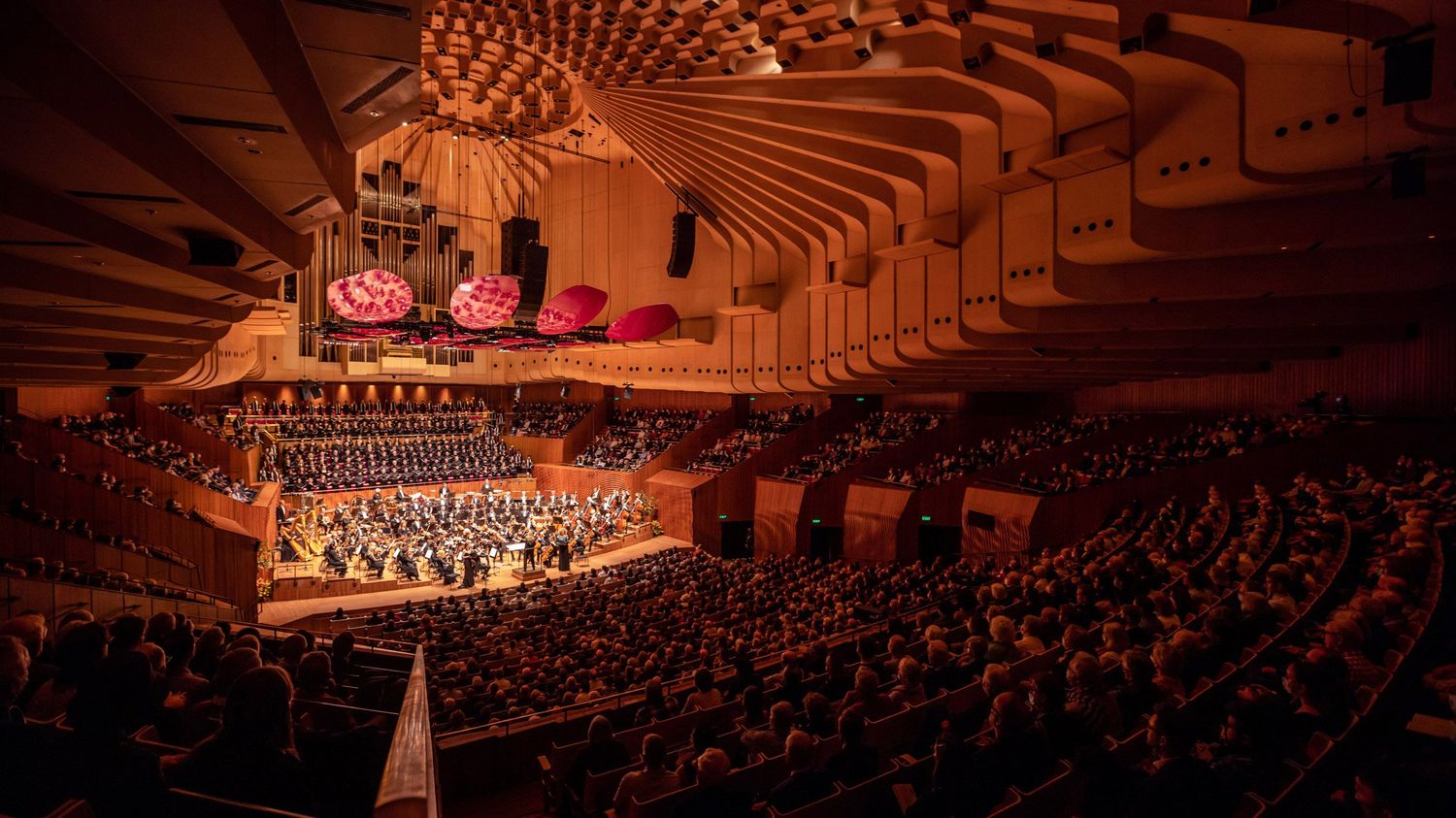

Opera
Who Designed The Sydney Opera House
Modified: January 22, 2024
Discover the legendary architect behind the iconic Sydney Opera House. Uncover the fascinating story of the Opera House's innovative design and its impact on the world of architecture.
(Many of the links in this article redirect to a specific reviewed product. Your purchase of these products through affiliate links helps to generate commission for AudioLover.com, at no extra cost. Learn more)
Table of Contents
Introduction
The Sydney Opera House is one of the most iconic and recognizable architectural masterpieces in the world. Its unique design, resembling billowing sails or shells, has made it a symbol of Australia’s cultural identity. This magnificent structure is not only a performing arts center but also a UNESCO World Heritage Site and a major tourist attraction.
Situated on Sydney Harbour, with the sparkling waters and the Harbour Bridge as its backdrop, the Sydney Opera House stands as a testament to human ingenuity and creative vision. It has become a symbol of architectural excellence and a global icon of modern design.
This article will delve into the fascinating history of the Sydney Opera House, from its conception to its completion. We will explore the selection of the architect, the design process, the construction challenges faced, and the controversies surrounding this architectural marvel. Additionally, we will examine the enduring legacy of the Sydney Opera House and its impact on the world of architecture and culture.
Join us on this journey through time and discover the remarkable story behind the creation of the Sydney Opera House.
Brief History of the Sydney Opera House
The history of the Sydney Opera House dates back to the mid-20th century when Australian officials recognized the need for a new performing arts venue in Sydney. In 1954, the New South Wales government announced an international design competition, inviting architects from around the world to submit their ideas. This competition would ultimately lead to the creation of one of the most iconic structures of the modern era.
The renowned Danish architect Jørn Utzon emerged victorious in the competition, with his visionary design capturing the imagination of the judging panel. Utzon’s design featured a series of sail-like shells that appeared to float on the water, a concept inspired by the surrounding harbor. His proposal encapsulated the spirit of the city and its connection to the sea, earning him the commission to bring his bold vision to life.
Construction on the Sydney Opera House began in 1959, and while the original estimated completion time was four years, the project faced significant challenges and delays. The most notable challenge was the development of a suitable construction method for the unique design. Utzon worked closely with a team of engineers to find solutions to the complex engineering and structural issues presented by the design’s unconventional shapes.
The construction process involved the creation of precast concrete shells, each weighing around 15 tons. Over one million glazed ceramic tiles were then carefully affixed to the surfaces, providing the iconic white appearance that shimmer in the sunlight. The building’s grand scale and the precision required for its construction made it a monumental engineering task.
Despite the delays and challenges faced during construction, the Sydney Opera House was officially opened by Queen Elizabeth II on October 20, 1973. The unveiling of this architectural masterpiece marked a significant milestone in Australia’s cultural history and was celebrated as a triumph of creativity, innovation, and determination.
Today, the Sydney Opera House draws visitors from around the globe who come to admire its grandeur and experience its world-class performances. It has become an enduring symbol of Australian pride and a testament to the power of architecture to capture the spirit of a nation. The Sydney Opera House continues to inspire and captivate audiences, cementing its place as one of the most remarkable architectural achievements of our time.
Selection of the Architect
The selection of the architect for the Sydney Opera House was a pivotal moment in its history. The New South Wales government’s decision to hold an international design competition in 1954 opened the door for architects from around the world to submit their ideas for this ambitious project.
Over 200 architects from 32 countries participated in the competition, each aiming to create a design that would not only become an iconic landmark but also represent the vibrant spirit of Sydney. The jury tasked with choosing the winning design was composed of renowned architects, including Eero Saarinen and Sir Leslie Martin.
Jørn Utzon, a Danish architect, emerged as the winner with his groundbreaking and visionary design. His concept, characterized by its striking sail-like shells, captivated the jury and stood out for its boldness and originality. Utzon’s design was a true departure from conventional architecture, with its organic and flowing forms that seemed to defy gravity.
The selection of Utzon for this prestigious project marked a turning point in his career, as he was relatively unknown at the time. His design for the Sydney Opera House catapulted him into the international spotlight and solidified his reputation as one of the most innovative architects of the 20th century.
Utzon’s design not only showcased his immense talent but also resonated with the judges due to its harmonious integration with the natural surroundings of Sydney Harbour. The concept of the sail-like shells reflected the city’s maritime history and paid homage to the iconic sails of the many boats that grace the waters of the harbor.
The selection of an international architect for such a prominent Australian project sparked controversy and debate among some critics who argued that a local architect should have been chosen. However, Utzon’s design clearly demonstrated the ability to create a structure that would become an architectural and cultural icon, and ultimately, his selection proved to be a stroke of genius.
The selection of Jørn Utzon as the architect for the Sydney Opera House not only brought about a groundbreaking design but also set the stage for an extraordinary collaboration between Utzon and the project team. This collaboration would push the boundaries of engineering and construction to bring Utzon’s vision to life and create a lasting legacy for generations to come.
Jørn Utzon: The Mastermind behind the Design
Jørn Utzon, the Danish architect behind the iconic design of the Sydney Opera House, is widely regarded as a visionary and a pioneer in architectural innovation. Born on April 9, 1918, in Copenhagen, Utzon’s approach to architecture was influenced by his upbringing and his exposure to the works of prominent architects such as Alvar Aalto and Frank Lloyd Wright.
Utzon’s design for the Sydney Opera House stood out for its groundbreaking use of sculptural forms and its integration with the natural environment. He believed in creating spaces that were not only functional but also evoked emotional responses and engaged with the human experience.
One of Utzon’s remarkable abilities was his talent for blending architecture with nature. His design for the Sydney Opera House, with its sail-like shells that seem to emerge from the water, perfectly harmonizes with the surrounding Sydney Harbour landscape. This integration of art and nature would become a hallmark of Utzon’s work, as he sought to create buildings that would coexist harmoniously with the environment.
Utzon’s design philosophy was deeply rooted in a belief in the power of light and its transformative effect on spaces. He once said, “Light, in time and in place, establishes reality.” This emphasis on light is evident in the Sydney Opera House, with the interplay of natural and artificial light enhancing the dramatic interiors and creating a sense of awe and beauty.
Throughout the construction of the Sydney Opera House, Utzon’s innovative approach presented challenges to engineers and builders. His design required the development of new construction techniques to realize the intricate shapes and forms. The result was a complex structure consisting of precast concrete shells, each unique in shape, carefully assembled to create Utzon’s vision.
Despite the immense success and recognition garnered by his design, Utzon’s relationship with the project faced significant difficulties. As construction progressed and costs escalated, clashes emerged between Utzon and the project stakeholders. Eventually, in 1966, Utzon resigned from the project, leaving it incomplete.
Despite Utzon’s departure, his influence on the project remained indelible. His original design concept had already left an indelible mark, casting the Sydney Opera House as one of the world’s most extraordinary architectural achievements.
After his departure from the project, Utzon continued to work on various architectural projects globally. His reputation as an innovative architect grew, and he received numerous accolades, including the Pritzker Architecture Prize in 2003 – considered the highest honor in the field of architecture.
Jørn Utzon’s design for the Sydney Opera House has made an indelible mark on the world of architecture. His unique vision and commitment to creating a building that connects with its environment and evokes emotional responses have left a lasting impact. Utzon’s revolutionary design serves as a reminder of the power of architecture to inspire, transcend boundaries, and become an enduring symbol of a nation’s identity.
Evolution of the Design Concept
The design concept for the Sydney Opera House, envisioned by Jørn Utzon, underwent a significant evolution from its initial conception to the final iconic form we see today. Utzon’s creative process spanned several years, and his relentless pursuit of perfection led to numerous iterations and refinements in the design.
Utzon’s original concept was inspired by the sails of ships dotting the Sydney Harbour. He aimed to create a structure that seamlessly merged with its surroundings, capturing the essence of Sydney’s maritime history. His early sketches featured abstract shapes resembling billowing sails and shells, which formed the basis for the eventual design.
As the design evolved, Utzon faced the challenge of finding a structural system that could support the intricate forms while maintaining stability. He collaborated with engineers to develop a solution based on a series of individual precast concrete shells. These shells provided the structural framework and contributed to the distinct appearance of the building.
The evolution of the design also involved considerations of functionality and practicality. Utzon meticulously planned the interior spaces to ensure optimal acoustics for the performance halls and to create a sense of flow and movement throughout the building. The configuration of the concert hall, opera theater, and other spaces went through several iterations to strike the right balance between functionality and architectural aesthetics.
Another crucial aspect of the design evolution was the incorporation of natural light into the building. Utzon recognized the transformative power of light on spaces and sought to harness its potential within the Sydney Opera House. The inclusion of large windows, skylights, and strategic openings allowed natural light to flood the interiors, creating a sense of warmth and connection with the surroundings.
Throughout the design process, Utzon’s attention to detail and dedication to creating a harmonious relationship between architecture and nature remained constant. He carefully considered the visual impact of the building from all angles and perspectives, ensuring that it looked stunning both up close and from a distance. The use of ceramic tiles on the exterior, with their reflective quality, added a touch of elegance and helped the building blend with the changing colors of the sky and water.
Ultimately, the evolution of the design concept for the Sydney Opera House led to the creation of a building that not only functioned as a world-class performance venue but also served as a symbol of architectural innovation and cultural identity. Utzon’s unwavering commitment to his vision transformed an idea inspired by sails on the harbor into an enduring icon that captures the imagination of visitors and continues to inspire architects and designers around the world.
Construction Challenges and Controversies
The construction of the Sydney Opera House was not without its fair share of challenges, both technical and political. The ambitious design presented unique engineering difficulties, and the project faced controversies that added to the complexity of its construction.
One of the major challenges encountered during the construction process was the development of a construction method for the unconventional design. Jørn Utzon and his team of engineers had to devise innovative solutions to create the large precast concrete shells that form the iconic roof structure of the Opera House. The complexity of the geometry and the need for precision in casting each individual shell posed significant logistical and technical challenges.
Another hurdle arose when construction costs escalated far beyond the original estimates. The ambitious design and the intricacies involved in its realization led to financial burdens that strained the project’s budget. This, in turn, led to disputes and tensions between Utzon and the project stakeholders, culminating in Utzon’s resignation from the project in 1966.
Following Utzon’s departure, the project went through a period of uncertainty. The completion of the construction fell into the hands of other architects and engineers who strove to stay true to Utzon’s original vision while finding practical solutions to finish the building. Despite the challenges, the construction continued, and the Sydney Opera House was ultimately completed in 1973.
The controversies surrounding the Sydney Opera House were not limited to its construction challenges. There was initial skepticism and criticism about the design itself, with some questioning the practicality and functionality of the unique shell-like forms. Local controversy also arose due to the selection of an international architect for such an important Australian project.
However, over time, public opinion shifted, and the Sydney Opera House gained widespread recognition as an architectural gem and cultural landmark. It became clear that Utzon’s design had created an awe-inspiring and iconic structure that captured the spirit of Australia and became a symbol of national pride.
Despite the challenges and controversies faced during its construction, the Sydney Opera House stands today as a testament to human perseverance and creativity. It serves as a reminder that great achievements often come with setbacks and hurdles, but with determination and innovation, extraordinary feats can be accomplished. The challenges faced during the construction of the Sydney Opera House ultimately shaped its journey and contributed to its enduring legacy as one of the most celebrated architectural wonders of the world.
Opening and Recognition
The opening of the Sydney Opera House on October 20, 1973, marked a historic moment in Australia’s cultural history. The grand unveiling of this architectural masterpiece was attended by Queen Elizabeth II, dignitaries, and thousands of enthusiastic spectators, solidifying its place as a symbol of national pride and an international landmark.
The completion of the Sydney Opera House was met with widespread acclaim and admiration from both the public and architectural community. This extraordinary building captured global attention and quickly became an iconic symbol not only of Sydney but of Australia as a whole. Its unique design, featuring sail-like shells perched on the edge of Sydney Harbour, captured the imagination of people around the world.
A testament to its architectural significance, the Sydney Opera House was recognized as a UNESCO World Heritage Site in 2007. This prestigious designation acknowledged its outstanding universal value and affirmed its importance as a cultural and architectural treasure.
The Opera House’s recognition extended beyond its architectural merits. It became a global center for the performing arts, hosting a wide array of world-class productions and performances. The Sydney Opera House’s concert hall, opera theater, and other performance spaces have welcomed renowned artists, musicians, and theater companies, solidifying its reputation as one of the premier cultural venues in the world.
Over the years, the Sydney Opera House has received numerous accolades and awards, further solidifying its place in architectural history. Its status as a symbol of design excellence and innovation was recognized by the world-renowned Pritzker Architecture Prize, which was awarded to Jørn Utzon in 2003, acknowledging his visionary contribution to the field of architecture.
Beyond the realm of architecture and arts, the Sydney Opera House has become a beloved tourist attraction, drawing millions of visitors each year. Its iconic silhouette has become an instantly recognizable symbol of Australia, featuring prominently in postcards, advertisements, and movies.
The opening and subsequent recognition of the Sydney Opera House have firmly established it as an architectural triumph and cultural icon. Its enduring popularity as a venue for artistic and cultural expression continues to resonate with audiences from all over the world. The Sydney Opera House stands as a testament to the power of architecture to transcend time, capture the spirit of a nation, and inspire awe and admiration for generations to come.
Legacy of the Sydney Opera House
The Sydney Opera House has left an indelible mark on the world of architecture, culture, and the city of Sydney itself. Its legacy extends far beyond its iconic design, as it continues to inspire, captivate, and enrich the lives of people from all walks of life. Let’s dive into the profound and enduring legacy of this architectural marvel.
Architectural Inspiration: The Sydney Opera House has become a source of inspiration for architects around the world. Its innovative design, characterized by the sail-like shells, has pushed the boundaries of architectural possibilities. The way in which it integrates seamlessly with its surroundings and captures the essence of Sydney’s harbor has set a new standard for blending architecture with nature.
Cultural Landmark: The Sydney Opera House has become a symbol of Australia’s rich cultural heritage. It has provided a platform for showcasing a diverse range of artistic performances, including opera, ballet, theater, music concerts, and more. The Opera House has played a crucial role in fostering artistic expression and promoting cultural exchange, making it an integral part of Australia’s cultural fabric.
Tourist Attraction: The Sydney Opera House is one of the most popular tourist attractions in Australia, drawing millions of visitors each year. People from all over the world come to admire its architectural magnificence, take guided tours, and attend performances. Its striking silhouette against the backdrop of the Sydney Harbour makes it an iconic image that represents the country.
Economic Impact: The Sydney Opera House has had a significant economic impact on the city of Sydney and Australia as a whole. It acts as a magnet for tourism, generating revenue for local businesses, hotels, restaurants, and theaters. Its role as a cultural hub attracts international events and conferences, further contributing to the economy.
Engineering Marvel: The construction of the Sydney Opera House presented formidable engineering challenges due to its unique design. Overcoming these challenges required innovative solutions and technical expertise. The success of the project has positioned the Opera House as an engineering marvel, showcasing the capabilities of human ingenuity and pushing the boundaries of construction techniques.
Education and Research: The Sydney Opera House has become a valuable case study for architects, engineers, and students of design. Its complex geometry, construction techniques, and integration with the environment present rich opportunities for research and exploration. The Opera House’s legacy includes its contribution to architectural education and the advancement of design practices.
Social Gathering Space: Beyond its artistic and architectural significance, the Sydney Opera House serves as a social gathering space for the local community. People flock to its outdoor promenades, cafes, and surrounding areas to enjoy the stunning views, participate in festivals and events, and simply spend time in the presence of this iconic structure.
The Sydney Opera House has stood the test of time and continues to hold a special place in the hearts and minds of people worldwide. Its legacy as a symbol of architectural excellence, cultural expression, and national pride is a testament to the power of visionary design and the enduring impact of remarkable architecture.
Conclusion
The Sydney Opera House stands as a testament to human creativity, innovation, and the pursuit of architectural excellence. From its inception to its completion, the Sydney Opera House has captivated the world with its iconic design, seamlessly blending art, architecture, and nature.
Designed by the visionary Danish architect Jørn Utzon, the Opera House’s sail-like shells have become a symbol of Australia’s cultural identity and a global architectural icon. Its grand opening in 1973 marked a historic moment, and it has since earned recognition as a UNESCO World Heritage Site, confirming its status as a cultural and artistic treasure.
The Sydney Opera House’s legacy extends beyond its architectural significance. It has become a symbol of inspiration for architects worldwide, pushing the boundaries of design and serving as a beacon of creative potential. Its cultural impact is undeniable, as it hosts world-class performances and connects people with the arts in a truly breathtaking setting.
The Opera House’s profound influence on the city of Sydney can be felt in its economic vitality, attracting tourists from around the globe and stimulating local businesses. Additionally, its engineering marvels and construction challenges have contributed to the advancement of construction practices and inspired future generations of engineers and builders.
Furthermore, the Sydney Opera House has left a lasting impression on the local community, serving as a social gathering space where people come together to enjoy the stunning views, participate in events, and create lasting memories.
In conclusion, the Sydney Opera House is a testament to the power of visionary design and the enduring impact of remarkable architecture. It remains an iconic symbol of Australia’s cultural heritage and continues to inspire awe, capture imaginations, and enrich lives. The Sydney Opera House is truly a masterpiece that transcends time and borders, standing as a testament to the transformative power of architecture and its ability to unite people through art and culture.



